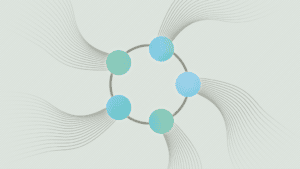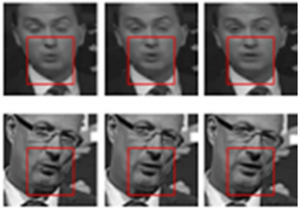Maintaining Concept Maps: A Time-Saver For Terminologists

Maintaining concept maps involves curating terminology data in a knowledge graph that visually displays the relations between concepts. The benefits of this include:
- Defining concepts more explicitly.
- Grouping/clustering concepts by semantic proximity.
- Being able to navigate from general to more specific concepts in a taxonomic fashion.
- Having the ability to feed this knowledge into other systems
All desirable features for terminologists and their organizations, yet we often hear the following reaction when discussing the use of the Coreon Multilingual Knowledge System (MKS):
I am already so busy with other daily duties. I have no time to maintain a concept map…
This is a common misconception, leading many to stick to the old method of storing an endless number of concepts in all required languages, while also writing lengthy definitions to explain and illustrate what each is about.
Particularly as a terminologist, working with a ‘concept map’ (such as the one visualised in the Coreon MKS) makes your life significantly easier and more efficient. So, let’s address a few concerns around the perceived burden of maintaining concept maps and look at exactly why they are in fact worth your attention!
Concept maps sound great but, as a terminologist, this just means additional work
Not if you make concept maps an integral part of your terminology management.
Consider your steps when adding a new term to your data set – let’s say HDMI input port. Firstly, you check if it already exists in your repository – you may just search for it (although read below why I think this is a dangerous method). However, if you have an already-developed concept system you can simply navigate to where you would expect concepts linked to ‘screens’ and other output devices to be stored. You may identify the concept ‘frame’, which is stored underneath the broader concept ‘screen’. You also see semantically similar concepts with terms such as on/off button, power cable, VGA port, or USB port.
You also need to decide – is the new HDMI input port simply the English term for an already-existing concept? Perhaps a colleague has already added it using the German term HDMI-Eingang, or using another synonym? In that case, you’d simply add HDMI input port as a term to the existing concept.
If the concept is indeed missing, however, you will want to add it. Now comes the key point – you are already at the location in your concept system where HDMI input port needs to be inserted. With the Coreon MKS, you would simply click ‘Insert new concept here’ and the relation between HDMI input port and its broader concept ‘frame’ is created in the background.

No additional work, then, but rather a welcome side-effect of adding new concepts in a systematic fashion. It’s comparable to the basic decision of where to save a new Word document in a file system, nothing more. And we do that every day, don’t we?
I see little value besides the nice visualization
Well, the value is in fact inherent in the visualization!
Let’s say you are faced with the task of illustrating and documenting your concepts by writing a definition.
How do you usually craft a definition? An established way is to explicitly differentiate the characteristics of a concept from its general, broader concepts as well as semantically closer concepts. An HDMI input port is part of the frame, and is also somewhat complementary to the VGA input.
In the concept map you see all related concepts at hand in one view, so you can write a clear text definition much faster. This is not a hypothesis – users of the Coreon MKS have confirmed that having the concept map at hand enables faster writing of the definition.
You also benefit when crafting and rating terms. Say you’d like to add a concept with a term such as LCD screen. Is this phrasing correct, or do we prefer LCD monitor? Luckily, through the concept map we have the broader concept with its term screen in view as well as two variants, TFT screen and LED screen. In all these cases the component screen was favored over monitor, so it’s a quick and easy decision for LCD screen over LCD monitor.
All in all you benefit from the linguistic work put into related concepts, enabling consistency across concepts!
I won’t click through maps, I prefer searching
What about the gaps and redundancies you miss when only relying on search?
At times we all use search, but it basically means having a guess with a keyword and hoping that this string is present in the repository.
Search only displays concepts where the search term, or slight linguistic variations of it, occurs. So, if you search for ‘screen‘ you would find TFT screen, LCD screen etc., but what if you queried for monitor or display? Or in another language, say the French écran or the German Bildschirm? Your search would miss the concept screen!
Consequently you decide to create a new concept triggered by your new term monitor – and you unfortunately just created a doublette – one concept for screen and one for monitor – even though these are synonyms. This is also a reason why I am not a big fan of duplicate recognition – a cool-sounding feature but one that only checks for homonyms and not redundant concepts…but that’s a topic for another blog post.
Navigating and interacting through a concept map is therefore the key best practice when it comes to updating or maintaining a repository. It keeps the data clean, allowing you to identify gaps to avoid redundancies and achieve high quality data that both your users and audiences can rely on as a trustworthy resource.
Your arguments are convincing – but I have no time to post-edit my existing large terminology collections
Doing this manually would indeed be time-consuming, but there is a solution.
We’ve produced a way to automate the process by using advanced AI and NLP methods to ‘draft’ a knowledge graph and speed up its creation dramatically.
If you own a ‘flat’ terminology collection of several thousand concepts – available in formats such as ISO TBX, SDL MultiTerm, or MS Excel – this auto-taxonomization method can now elevate the data into a knowledge graph faster, getting the most tedious and time-consuming part done before you apply your own expert knowledge manually.
A boost, not a burden.
So, there it is. Maintaining concept maps doesn’t just add ‘additional’ illustrative flavors to your terminology data. In fact it should be an integral part of your process as you look to maximize efficiency.
Want to read more on this? Have a look at Malcolm Chisholm’s post where he discusses Types of Concept System: “Concepts do not exist as isolated units of knowledge but always in relation to each other.” (ISO 704)
Get in touch with us here to learn more about maintaining concept maps and how they can revolutionize your workflow.


